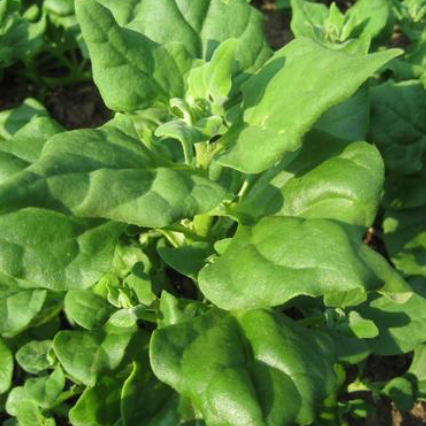
Spinach for Spring, Spinach for Summer
Fresh spinach from spring-sown seeds is now available in most home gardens. It is a delicious, mild-flavored green that is equally appealing served fresh in salads or sauteed with garlic or wilted in soups. It can be sown in the last days of winter, earlier than any other crop, and it will grow beautifully and produce plenty of ripply fresh leaves quickly as long as it is sown in fertile soil. Harvest your spinach by clipping bigger outer leaves and allowing the inner leaves to keep growing, or by clipping the whole plant about an inch above the soil. Spinach served fresh from the garden--either in raw or cooked form--is much, much better than supermarket spinach: it is meltingly tender and sweet-flavored.
Enjoy your spinach while you can, for it is a short-lived pleasure in the spring: spinach responds to lengthening days and warming temperatures by bolting (going to seed), with the last spinach from later spring sowings usually available only until July 1st or so. While there are plenty of other greens available the whole summer long (such as chard, kale, collards, and various mustard greens), none of them have quite the mild flavor and soft texture of spinach. But a couple other crops do, and it is these heat-loving green vegetables that can keep your kitchen in spinach until the next round of "real" spinach becomes available in late September. The main warm-season substitute is New Zealand Spinach, one of the few cultivated vegetables hailing from Oceania. In habit, it is quite different from regular spinach, spreading laterally across garden beds and jutting upward about six inches. Its smallish leaves and growing tips are tender, and it provides a soft, spinach-like texture when quick steamed, added to stir fries at the last minute, or quickly sauteed. Its flavor is slightly more pronounced than spinach's (it is less sweet, a bit more wild), but it is not at all unpleasant and replaces spinach in any cooked preparation. Another option is Malabar Spinach, a climbing vine from Asia. Just like New Zealand Spinach, Malabar Spinach yields tender growing tips along with its leaves. It loves hot, even tropical weather--which explains its slightly shiny leaf surface. Its flavor is mild. Malabar becomes mucilaginous when overcooked, so be sure to saute only briefly or to put in soups only at the last moment. To order seeds of New Zealand Spinach, click on the link above--we don't have Malabar in stock this year, but are growing some in our seed garden and hope to have it available next season.






